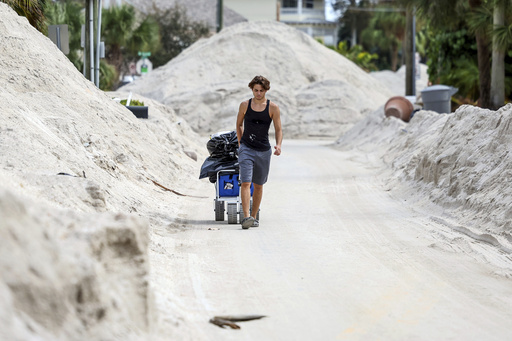
ORLANDO, Fla. — The recent hurricanes have significantly impacted the community of Treasure Island, Florida, as Mayor Tyler Payne announced his decision to relocate after his home suffered extensive flooding due to Hurricane Helene. Just weeks after this storm, which devastated thousands of homes across the Gulf Coast, Hurricane Milton also contributed to the destruction in the state. In a heartfelt communication to residents, Mayor Payne shared that he and his husband could not afford the costs associated with rebuilding their property. Furthermore, he stated that he would be stepping down from his role as mayor.
“It pains my heart to make this decision during our recovery process, but ultimately, it is in the best interest of my family,” stated Payne, who has served in the mayoral position for over three years and is a fourth-generation resident of Treasure Island. The announcement adds to a growing trend among Florida’s coastal residents, who are grappling with the tough choice of whether to remain in hurricane-prone areas or move elsewhere. Key questions include the feasibility of rebuilding their homes and the extent of insurance coverage available to them. Prospective Floridians are also weighing the risks associated with potentially living in a storm-affected state.
Historically, such questions emerge in the wake of active hurricane seasons. For instance, following a swath of hurricanes in 2004, the state’s resilience was tested. Despite the frequent storms, Florida’s population has surged by one-third to around 23 million in the past 20 years. In fact, last year saw an influx of over 365,000 new residents, making it one of the fastest-growing states in the U.S., only trailing Texas.
While the real estate market in Florida has shown signs of cooling recently—with a reported 12% drop in single-family home sales in September compared to the same time the previous year—factors like rising interest rates, increasing home prices, and soaring insurance costs have overshadowed the impacts of recent hurricanes. “Florida tends to bounce back faster than many might expect,” remarked Brad O’Connor, chief economist for Florida Realtors.
Research indicates that the aftermath of hurricanes typically sees a transient migration pattern, where those who do leave often relocate within the region rather than making long-distance moves. Generally, older individuals with more wealth tend to return to their communities post-disaster. Although there can be an initial decrease in housing availability as homeowners await insurance payouts, studies show that in the three years following a hurricane, home prices in affected areas tend to rise by an average of 5% compared to other regions.
Various elements play a role in how swiftly a community can recover, including whether homes had insurance, the timeliness of insurance payouts, and the availability of construction professionals. Enhanced building codes established after Hurricane Andrew in 1992 have led to newer homes that are generally more resilient to hurricanes, according to O’Connor.
Among the recent storms, Hurricane Ian’s impact on Lee County exemplifies both immediate and longer-term changes in local demographics and housing. In the aftermath of the storm, population growth decreased significantly, while household numbers shrank from approximately 340,000 to nearly 326,000. Statistics from United Van Lines indicate that many more people are now relocating out of Lee County compared to previous years.
In Bay County, impacted by Hurricane Michael in 2018, the community exhibited signs of recovery over the subsequent four years. The county regained its pre-hurricane population levels, but it has also become more diverse, affluent, and aged, reflecting broader shifts among its residents. Notably, the percentage of households earning over $200,000 jumped significantly, suggesting that some more vulnerable residents may not have been able to return or rebuild.
In his message, departing Mayor Payne expressed his dedication to maintaining connections with the community even after his move, citing his parents’ plans to rebuild on the barrier island. Payne, who has a background in law and also works in his family’s eyeglass manufacturing business, acknowledged the difficult choices many residents now face. “I truly empathize with the challenges that confront our community,” he added.
